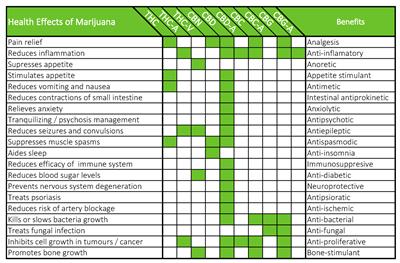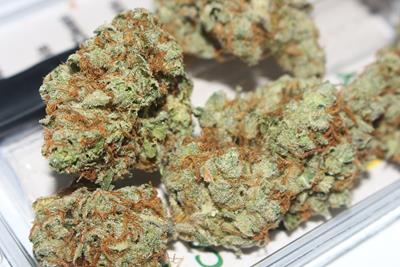
Thursday April 28, 2016
 Health/Science
Health/Science
In 2015, a few scientists got together and wrote a paper describing the earth as a giant battery. In the paper, they explain how the earth creates a charge by converting sunlight into either living biomass energy (like forests and plankton) or fossil fuels. Unfortunately, as the human population expands, the earth’s ability to generate and hold a charge diminishes creating a major energy crisis.
According to the Global Energy Statistical Yearbook, worldwide energy consumption is steadily on the rise and Americans are a big part of it. Coming in a close second to China (where the population is three times as large), Americans consume roughly 25 percent of the world’s total energy consumption. And now we’re growing weed – a lot of weed -- which is by no means energy efficient.
Strict zoning laws for cannabis businesses require all cultivation facilities to be secure and out of public view. For this reason, many professional grow operations are located in gutted warehouses which require a lot of energy to function. The optimum environment for a marijuana grow requires constant lighting, ventilation and climate control which can cost professional growers as much as $12,000 per month or more. Though some growers supplement with LED lights to reduce electricity cost and help them qualify for rebates, many others insist that the lower energy bill is not worth the drop in product quality. Hence, the need to fully-charge marijuana grow houses will continue as the industry expands across the nation.
And therein lies our quandary: How can America reduce its energy consumption while promoting marijuana reform? The answer: industrial hemp.
How Hemp Can Help Conserve Energy
Hemp can be used to create many different items – clothing, cosmetics, cars, homes, fuel, medicine, – and the production process requires less energy to do so, too. Hemp-based products also require fewer hazardous materials to produce and can be re-grown in a fraction of the time without requiring seasonal crop rotation.
By switching to hemp-based items as frequently as possible, we can conserve precious fossil and biomass fuels without having to sacrifice all the cool stuff we so impulsively crave. And since hemp can absorb carbon dioxide and other environmental toxins and convert them into oxygen, national (or better yet, worldwide) hemp cultivation could help stop global warming, too!
Using Hemp in Energy Storage
Hemp not only helps conserve energy, it can help store it, too. According to David Mitlin, engineering professor at Clarkson University in New York, hemp fibers may be better than graphene for use in supercapacitors (giant batteries used to store energy). Though graphene conducts electricity slightly better than hemp, the process through which to create it is labor-intensive, requires the use of dangerous chemicals and must be mined which is hazardous to workers and the environment. And because hemp (unlike graphene) is renewable, its production is eco-friendly and affordable (up to 1000 times more affordable than graphene, in fact).
Unfortunately, due national hemp cultivation restrictions, the cost to produce and research hemp’s energy storage potential is unreasonably high. Because America imports most of its hemp, acquiring a sufficient amount of raw hemp to create and test these supercapacitors is slow and expensive. Though some states have recently passed industrial hemp laws, until the rest of the nation hops on board, standard fossil fuels will continue to be our go-to for powering our homes, businesses and marijuana cultivation facilities.
Marijuana legalization (as awesome as it is) has not helped our energy crisis. Large-scale marijuana cultivation and production requires an excessive amount of energy due to zoning restrictions that either force legal grow houses to operate out of warehouses or drop a couple million dollars on custom greenhouse solutions.
Fortunately, hemp could help reduce our energy consumption in a number of ways-- and help us store energy for later use, too – if we could just get ahold of it.
What uses for hemp are you most excited about? Comment below or share with us on Facebook.
Photo Credit: Андрей Чеботарев







